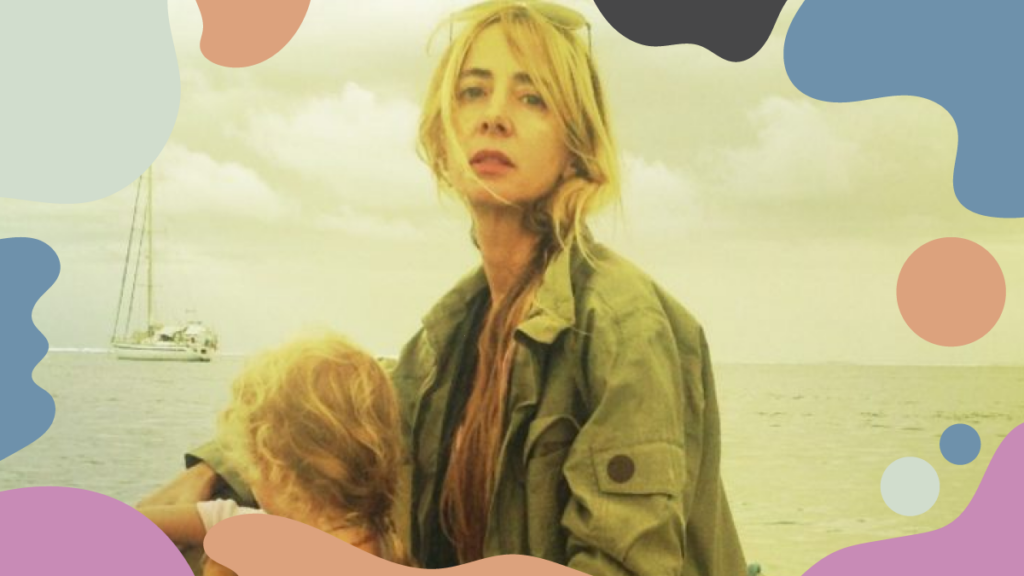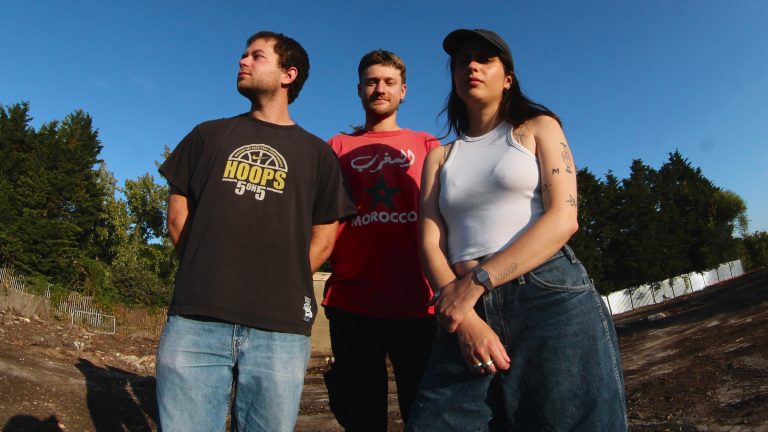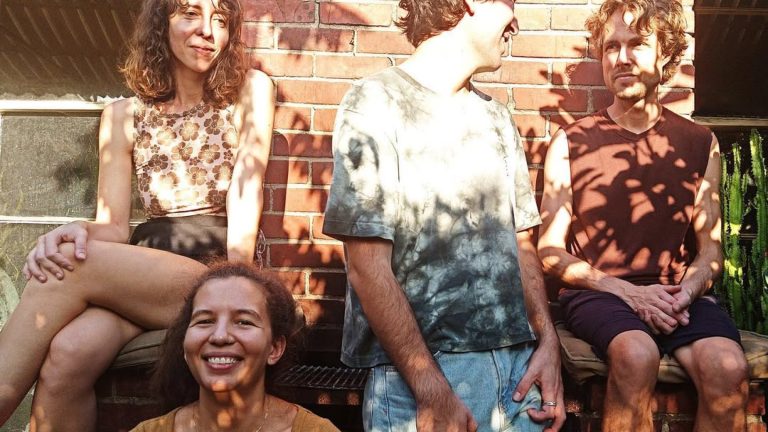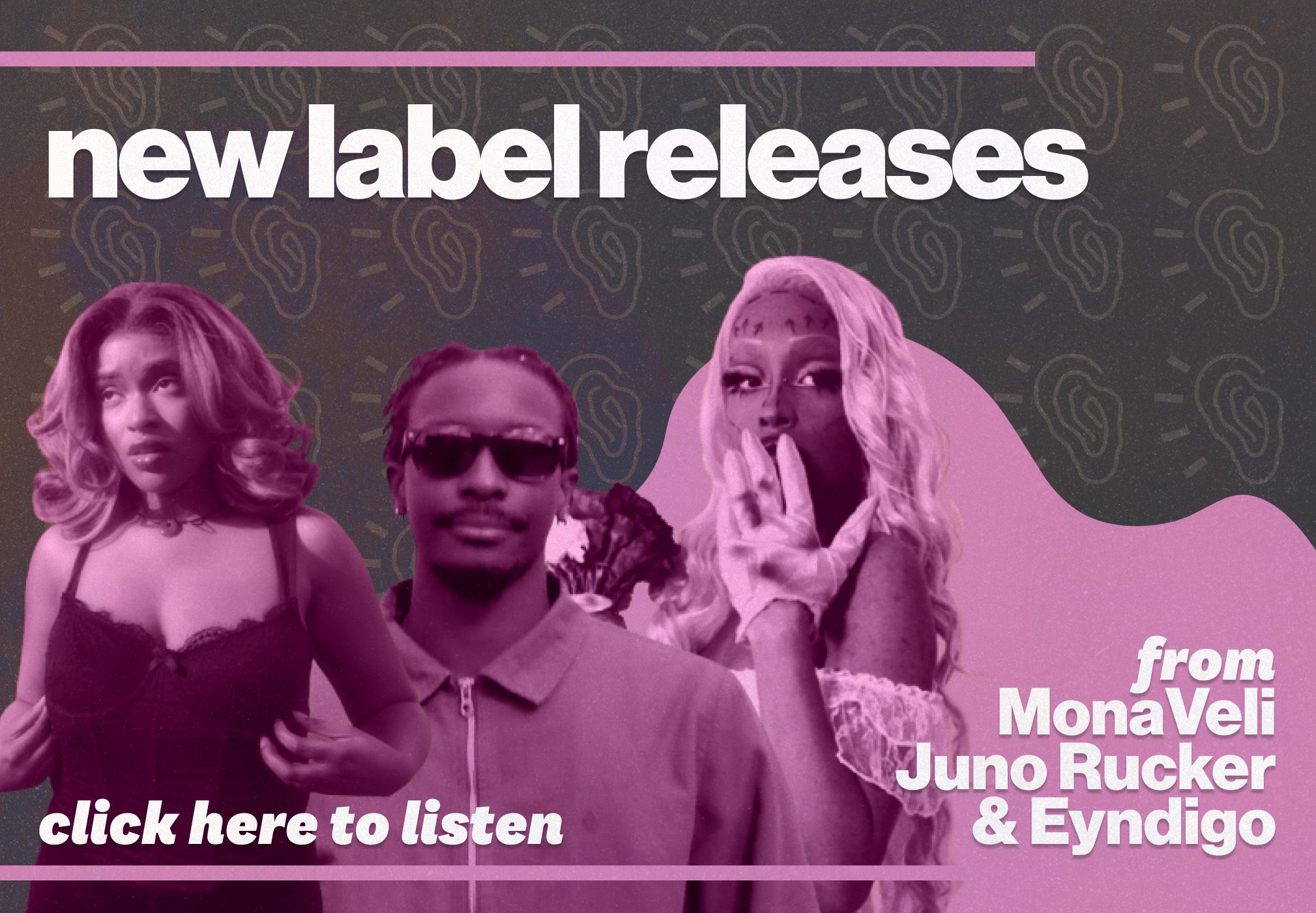Among a wilderness filled with glass sits KatieJane Garside. In this field, she goes by Lalleshwari; in 2007, she opened her tortured soul for all with Lullabies In A Glass Wilderness. The over an hour-long project has only become a lost, dark, lo-fi gem ever since.
Garside started her musical career as the lead singer of the garage punk band Daisy Chainsaw in 1989. Four years later, the traction became overwhelming, so she quit. Garside hid out in the Lake District of England. Although she was out of the public eye and music scene, she continued making music with a four-track recorder. After recording in solitude for six years, she self-produced and self-released under the name “Lalleshwari.” The name comes from a fourteenth-century Kashmir poet who created mystic poetry according to Hindu philosophy. Lalleshwari is fitting for Garside as her lyrics can stand alone as complex poems –– “Maybe her light could illuminate my dark / The cave walls are leaking, I can’t make a spark / The telephone is ringing but I won’t take your call / I’m too busy sinking, climbing the walls, yeah, yeah” –– while the overall sound is transcendental with nonwestern influences.
Lullabies In A Glass Wilderness begins with a childlike cry and spiritual chants. The noises are fuzzy; the lyrics on “Genica Pussy-Willow” are hard to detect. She’s singing about the sun—a common theme—but it feels like she’s whispering in a different language instead. The synthesizer sounds are repeated and her vocals are layered. Ten seconds too soon, the vocal and rhythm tracks abruptly end, leaving white noise before a complete silence. The sound creates an aesthetic that matches the distorted, low-quality self-portrait cover and sets listeners up for the glitchy, twisted fairytale album.
After the pause, the four-track recorder is rewound and set up all over as “Roadkill” begins. This time, the song features a drum machine, bell, and piano playing the same notes. Her vocals are darker but clearer. There’s also echoing vocals layered as well that further drags out words she already drags out (think: roaaaaaaaaadkiiiiiiiiiiiiiiiiiiiiill-iiiiiiiill rather than roadkill). The song becomes a haunting dream but not yet a nightmare.
Along with singing, whispering, and echoing, Garside screams and even bawks on “Lesions In The Brain.” Her voice is hoarse, cracking now and then like she just chain smoked an entire pack by herself. Garside sings closely into the microphone, sometimes having it blow out. On this track, her passion almost becomes comedic. Although in the chorus she swears she’s not going insane, she eventually screams, “and god, I kept falling to Hell / and as I’m waiting for someone to catch me / for someone to stop my insane fall.” Indifferently while rolling her eyes, she finishes the verse with, “I heard a knock, and the door was ajar / and I opened, there’s no one at all.” In the end, Garside becomes serious again sweetly singing, “Mother, please save me, a girl going crazy / a lover deprive me amour.” Her mental instability is another common theme but never comes across as self-pity or self-loathing. Instead, Garside uses Lullabies In A Glass Wilderness as a passion project to explore her talents. That is why “Lesions In The Brain” can catch listeners off guard with the jazzy, almost folky instrumental.
Similarly, with “Marybell (Rides Into Town On A Pig), Garside takes listeners back to Mississippi during the Delta Blues era. The sound is roomy as if she was singing the story at an open mic bar. Using mainly her guitar, the song feels strip-down and naked compared to the others. Garside’s vocals don’t seem to have a dramatic stylization either. If her quiet harmonies weren’t included, the song would seem like a one-take live production.
The sixteen songs are cohesive and set up similarly –– a single set of chords without variation –– but never the same. Even with minimal instruments and tracks, each song remains different from the rest. “Dark Angel” could be the opening for American Horror Story with its slow bends and orchestral sample played through a delayed pedal. Garside used her guitar as a sample machine rather than an actual instrument to create a hypnotic, haunting song. The chorus becomes sexier by speeding up the same sample. She uses “Dark Angel” to show her two sides. “Sleep Like Wolves” is a sad, soothing song. Garside’s voice is peaceful, vibrating a tiny bit when she hits higher notes. The outside rain sounds like it’s making an appearance, emphasizing the melancholic tone “Gaslight” immediately starts with a lot happening. There’s a kalimba and a drone sound from a woodwind instrument. Yet, the overall song is primarily her diverse vocals and breaths. The multiple layers are most obvious on this song, almost like there’s multiple Garsides recording together.
“Puppy Love” is the untraditional ballad of the album. Due to the upbeat Casio keys, “Puppy Love” has the happiest feeling. Her voice goes back and forth from talking to delicately dragging out the lyrics. The song ends up sounding more like a recording of a recording. “Lost Upon The Flame” is reminiscent of early unreleased Lana Del Rey, especially during the chorus when Garside’s voice becomes deeper. The sample in this song sounds celestial, hypnotizing as well. “In The Birdcage Part 1” has a district circus during Christmas that starts with a single piano key. As more keys and sounds are introduced, the scarier the song becomes.
Still, some songs do feel too long. The naive song, “Awaiting You,” is beautiful and delicate. Garside even sounds ghostly on this one. However, with the repeating clock noise and the same lyrics –– “I swim the lake for I have lost my shoes / I’m holding on, I’m still awaiting you / Awaiting you, awaiting you” –– over and over, the song becomes tedious. She may be trying to replicate her wait by making the song longer than the average length, but that has already been made clear. There’s only one verse that doesn’t explicitly say, “I’m awaiting you.” Even when the clock noise ends, Garside takes an extra 28 seconds to extend her last words. The same situation occurs with “Just One Day Of Endless Love.” The point of the song is to be an almost nineteen-minute mystic lullaby, but it becomes dull without much alteration. A minute in, Garside already restarts the song.
One of the biggest strengths of this album is Garside’s lyrics. With her depressing-yet-profound lyrics, she becomes the musical version of Sylvia Plath. Even the lines “I leave the gas burning till the quiet hours / This smile bestowed in me, she flowers,” on “Gaslight” are akin to Plath’s “Lady Lazarus.” She’s constantly using personification, metaphors, and other literary techniques to share her feelings. Garside’s words are full of descriptions that tell stories. In “Too Busy Sinking” she brings listens out into the sea with her by singing, “They gave me a dream but it turned out all sour / the wind, she did shake me and break me for hours / they lift up my sails and they’ve torn down my mast / the gods up above me, they laugh, they laugh.” With a close listen, one can picture Garside struggling to sail off. The word “close” is crucial because the lyrics are often hard to catch due to the graininess. Multiple listens and a Google search is necessary to notice the emotional intensity.
Yet, there won’t be much information about the project all together besides YouTube uploads and Genius lyrics. The album was released over a decade ago and fell through the cracks between indie pop and Vans Warped Tour in 2007. Across the pond, where Garside lived, Arctic Monkeys released Favourite Worst Nightmare and The Kooks were between albums. Although she was heavily influenced by the 90s’ grunge and punk scene she was surrounded by, Lullabies In A Glass Window was born a little too late. At the same time, she was a little too early as well. Garside was the blueprint for Alice Glass’ and Grimes’ dark pixie personas. With the revival of Tumblr 2014 and swampy fairycore, 2022 is now the perfect moment for the project.
Due to the self-production and four-track format, the album is raw. Static and buzzes fill out the gaps. It is known when Garside clicks stop, rewind, and record. Sometimes she even lets out a laugh. The finished product becomes an intimate grunge art project. To go along with the physical CD, Garside created four short films: In The Hallway, In The Bedroom, At The Window, In The Kitchen. Each features Garside moving slowly in black and white with songs not featured on Lullabies In A Glass Window but sound like they could be. Those additions prove that Garside isn’t just a musician and writer but an actual artist. Even on a technical level, she has mastered layering production while breaking rules. At the end, Lullabies In A Glass Wilderness is a scratchy goodnight kiss to melancholic people everywhere.
You can listen to Lullabies in a Glass Wilderness, which was released December 17, 2007, on all streaming platforms.





